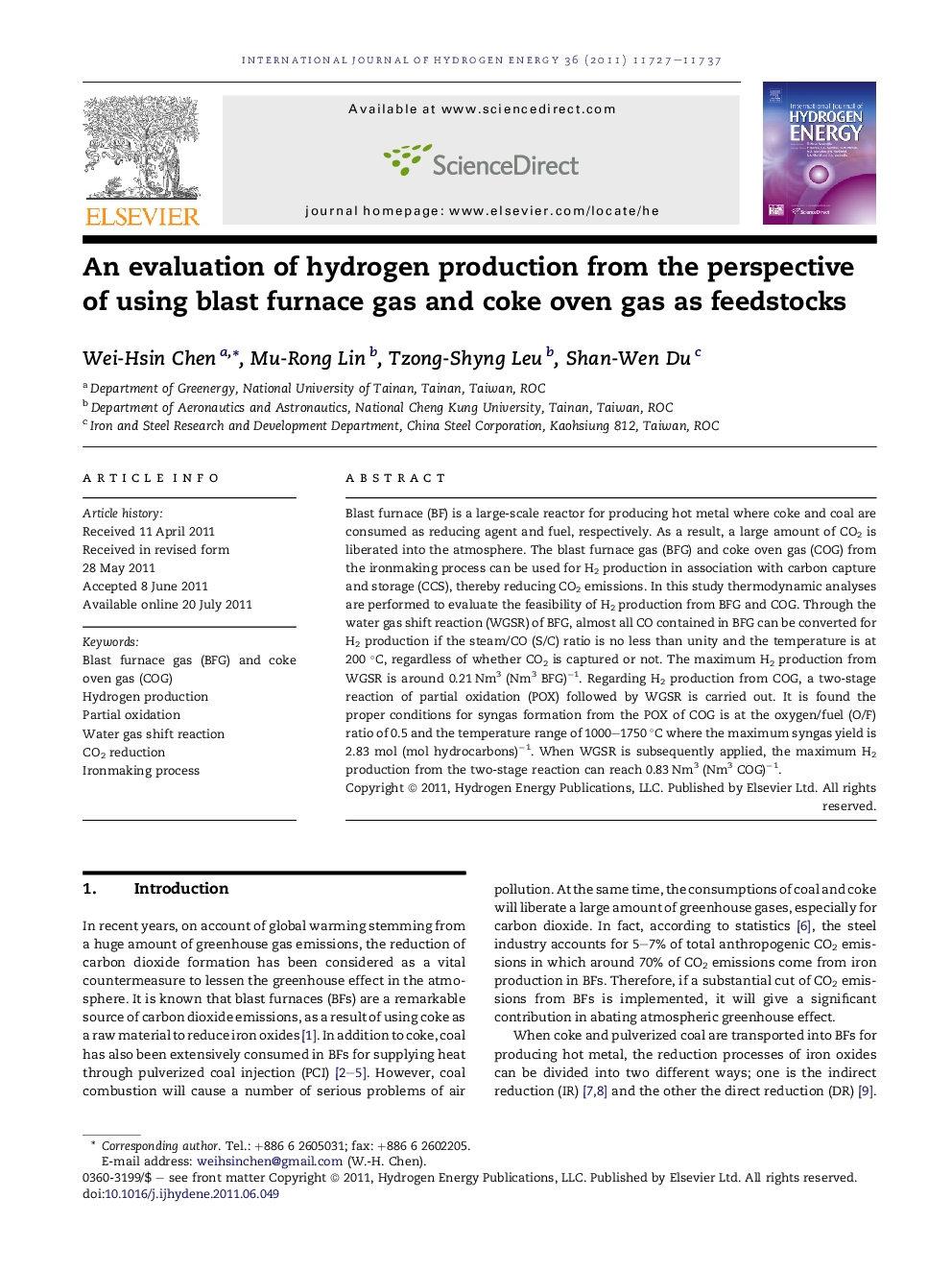| Article ID | Journal | Published Year | Pages | File Type |
|---|---|---|---|---|
| 1275863 | International Journal of Hydrogen Energy | 2011 | 11 Pages |
Blast furnace (BF) is a large-scale reactor for producing hot metal where coke and coal are consumed as reducing agent and fuel, respectively. As a result, a large amount of CO2 is liberated into the atmosphere. The blast furnace gas (BFG) and coke oven gas (COG) from the ironmaking process can be used for H2 production in association with carbon capture and storage (CCS), thereby reducing CO2 emissions. In this study thermodynamic analyses are performed to evaluate the feasibility of H2 production from BFG and COG. Through the water gas shift reaction (WGSR) of BFG, almost all CO contained in BFG can be converted for H2 production if the steam/CO (S/C) ratio is no less than unity and the temperature is at 200 °C, regardless of whether CO2 is captured or not. The maximum H2 production from WGSR is around 0.21 Nm3 (Nm3 BFG)−1. Regarding H2 production from COG, a two-stage reaction of partial oxidation (POX) followed by WGSR is carried out. It is found the proper conditions for syngas formation from the POX of COG is at the oxygen/fuel (O/F) ratio of 0.5 and the temperature range of 1000–1750 °C where the maximum syngas yield is 2.83 mol (mol hydrocarbons)−1. When WGSR is subsequently applied, the maximum H2 production from the two-stage reaction can reach 0.83 Nm3 (Nm3 COG)−1.
► Thermodynamic analyses are performed to evaluate the feasibility of H2 production from BFG and COG. ► The maximum H2 production from the WGSR of BFG is 0.21 Nm3 (Nm3 BFG)−1. ► A two-stage reaction of POX followed by WGSR is carried out to generate H2 from COG. ► The maximum syngas yield from the POX of COG is 2.83 mol (mol hydrocarbons)−1. ► The maximum H2 production from the two-stage reaction of COG can reach 0.83 Nm3 (Nm3 COG)−1.
